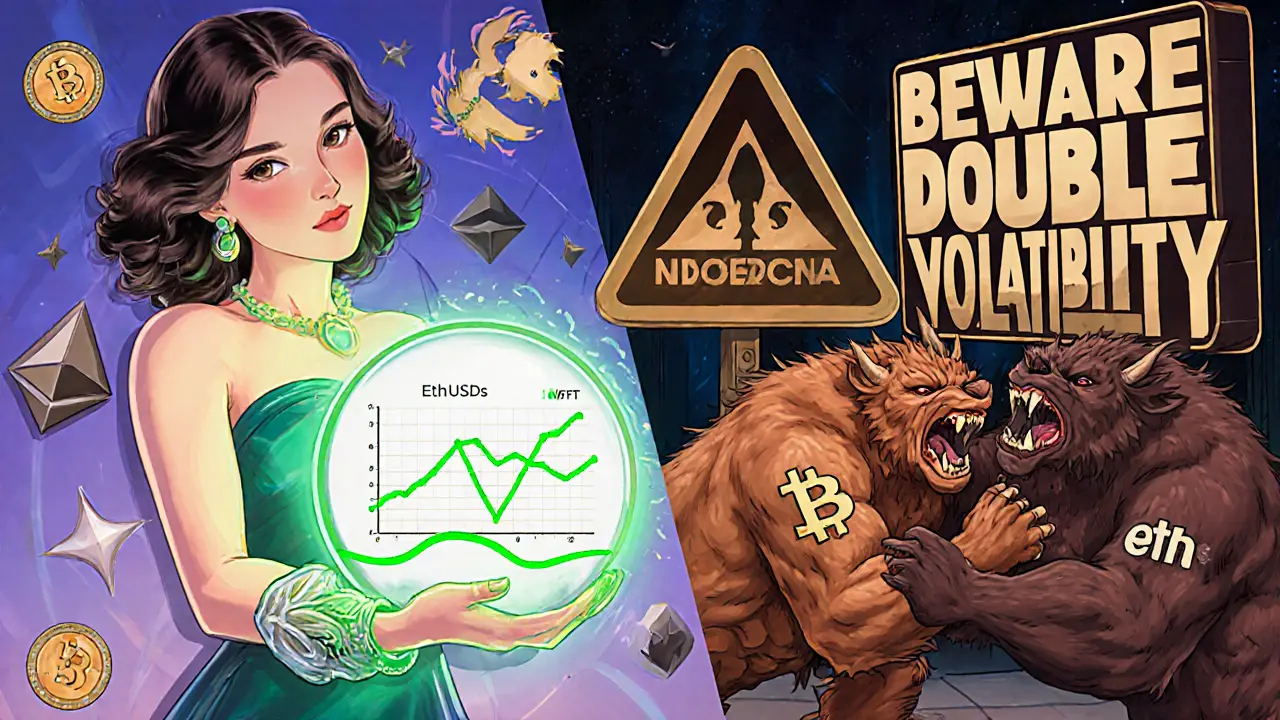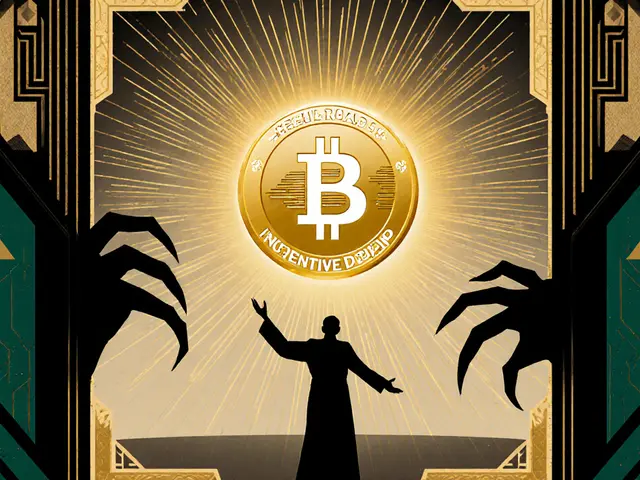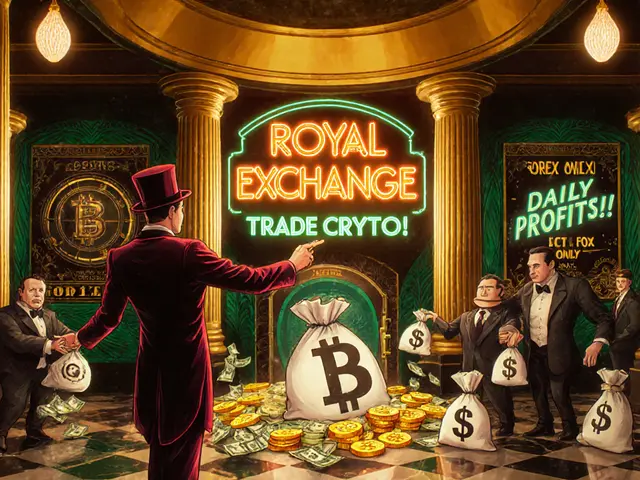Trading Pair Slippage Calculator
When you look at any crypto exchange, you’ll see dozens of trading pairs. But if you’re just starting out, or even if you’ve been trading for a while, the real action almost always centers on three: BTC/USDT, ETH/USDT, and ETH/BTC. These aren’t random combinations-they’re the backbone of the entire crypto market. Understanding how they work isn’t just helpful; it’s essential if you want to trade with confidence.
What Exactly Is a Trading Pair?
A trading pair is simply two cryptocurrencies listed together so you can trade one for the other. The first coin is the base currency-what you’re buying or selling. The second is the quote currency-what you’re using to pay for it. For example, in BTC/USDT, Bitcoin is the base, and Tether (USDT) is the quote. If the price is 26,500, that means you need 26,500 USDT to buy 1 BTC. In ETH/BTC, Ethereum is the base, and Bitcoin is the quote. If the price is 0.05, you need 0.05 BTC to buy 1 ETH. It sounds simple, but this structure affects everything: how you place orders, how you read price charts, and even how much you pay in fees. Most beginners make the mistake of treating all pairs the same. They’re not.Why USDT Is Everywhere
You’ll notice that USDT shows up in the quote position for nearly every major pair. That’s not an accident. Tether, launched in 2014, was the first widely adopted stablecoin-designed to hold a 1:1 value with the U.S. dollar. It’s not perfect, but it’s the most liquid one out there. As of mid-2023, over 62% of all cryptocurrency trading volume happened on pairs using USDT as the quote currency. That’s more than $2.3 trillion in just one quarter. Why? Because it removes the guesswork. When you trade ETH/USDT, you know exactly how much your Ethereum is worth in dollars-no need to track Bitcoin’s wild swings. Compare that to trading ETH/BTC. If ETH/BTC goes up, is Ethereum getting stronger? Or is Bitcoin crashing? You can’t tell just by looking at the price. With ETH/USDT, you get a clear signal: if the price rises, ETH is gaining value against the dollar.BTC/USDT: The Market’s Anchor
If there’s one pair that moves the whole market, it’s BTC/USDT. It consistently handles over $25 billion in daily volume across Binance, Coinbase, Kraken, and others. That kind of liquidity means tight spreads-often just 0.02% to 0.05%. For a $1,000 trade, that’s less than 20 cents in fees. It’s also the most stable pair among the top three. During the crypto crash in May 2022, BTC/USDT had a 90-day volatility of 0.85%. ETH/BTC? That jumped to 1.22%. In plain terms: BTC/USDT moves less. That makes it ideal for beginners who want to learn price action without getting shaken out by sudden swings. In fact, Binance’s 2023 survey found that 78.4% of new traders stick to USDT pairs. They’re not wrong. If you’re trying to learn how to read candlesticks, spot support levels, or use limit orders, BTC/USDT gives you clean, reliable data.
ETH/USDT: The Smart Contract Powerhouse
Ethereum isn’t just another coin. It’s the platform behind most DeFi apps, NFTs, and smart contracts. That’s why ETH/USDT is the second-most-traded pair after BTC/USDT, handling about $12 billion daily. Unlike Bitcoin, which is mostly seen as digital gold, Ethereum’s value is tied to real-world usage. When DeFi lending surges, NFT sales spike, or new dApps launch, ETH/USDT often reacts first. That makes it a great indicator of broader crypto sentiment. Traders love ETH/USDT because it’s liquid, responsive, and less chaotic than ETH/BTC. You don’t have to worry about Bitcoin’s influence. You’re watching Ethereum’s story unfold directly against the dollar. A Reddit user summed it up well: “ETH/USDT is the only sane way to trade-ETH/BTC just adds unnecessary volatility from two moving parts.”ETH/BTC: The High-Risk, High-Reward Pair
ETH/BTC is a crypto-to-crypto pair. It tells you how Ethereum performs relative to Bitcoin. If ETH/BTC rises, Ethereum is outperforming Bitcoin. If it falls, Bitcoin is stronger. This pair is popular among advanced traders who want to hedge or rotate between assets without touching USDT or fiat. For example, if you think Bitcoin is overvalued but still believe in crypto, you might sell BTC and buy ETH using ETH/BTC-skipping the stablecoin step entirely. But here’s the catch: spreads on ETH/BTC are wider-often 0.1% or more. Slippage is higher. During a market crash, a $5,000 trade might move the price by 3-5%. One trader on Trustpilot lost 7.3% on an ETH/BTC trade just because the order filled at a bad price during a dip. It’s also harder to interpret. If ETH/BTC drops, is it because ETH weakened? Or did BTC surge? You need to check both ETH/USDT and BTC/USDT to know. That’s why most beginners avoid it. And most experts recommend sticking to USDT pairs until you’re comfortable reading multiple charts at once.Why Liquidity Matters More Than You Think
Liquidity isn’t just a buzzword. It’s what keeps your trades from blowing up. High-liquidity pairs like BTC/USDT and ETH/USDT have deep order books. That means when you place a market order, it gets filled quickly at the price you expect. Low-liquidity pairs? You might think you’re buying at $1,800, but your order pushes the price to $1,850 before it finishes. That’s slippage-and it can cost you hundreds on a single trade. Pairs with daily volume under $10 million often have slippage of 1-3%. That’s not a typo. A $1,000 trade could lose you $30 just from bad fills. That’s why the top three pairs dominate: they’re deep, they’re fast, and they’re predictable. Smaller altcoins like ADA, SOL, or AVAX might look tempting, but their pairs with BTC or USDT are nowhere near as reliable.
Counterparty Risk: The Hidden Danger of USDT
USDT is convenient-but it’s not risk-free. Tether Limited, the company behind USDT, holds reserves to back each coin. But what if those reserves aren’t fully backed? What if there’s a bank run on Tether’s assets? In May 2022, USDC-a competing stablecoin-briefly dropped to $0.88 after Silicon Valley Bank collapsed. That caused panic across all USDC-based trading pairs. Prices spiked, orders failed, and traders lost money. While USDT didn’t depeg that day, the event scared a lot of people. A 2023 Fidelity poll found that 23.7% of traders are worried about Tether’s reserves. And experts like Alex Thorn from Galaxy Digital warn that overreliance on USDT creates systemic risk-if Tether falters, 60% of crypto liquidity could freeze. That’s why some traders keep a portion of their funds in USDC or even ETH. It’s not about avoiding USDT-it’s about not putting all your eggs in one basket.What Should You Trade?
If you’re new: Start with BTC/USDT. It’s the most stable, the most liquid, and the easiest to understand. Learn how to read charts, place limit orders, and manage risk here first. Once you’re comfortable, add ETH/USDT. It’s more volatile than BTC, but it’s still anchored to the dollar. You’ll get exposure to DeFi and smart contract trends without the noise of crypto-to-crypto trading. Only after you’ve mastered those two should you try ETH/BTC. Use it to rotate between assets, not to chase quick profits. And always check both ETH/USDT and BTC/USDT before making a move.What’s Next for Trading Pairs?
The market is changing. Tether’s latest reserve report (July 2023) showed 84.6% of USDT is backed by cash and cash equivalents-better transparency than ever. Coinbase and Binance are rolling out tools to analyze pair performance. Kraken’s prototype “smart pairs” reduced slippage by nearly 20% in testing. And soon, you might see new pairs: BTC/EURt or ETH/JPYt, if central bank digital currencies take off. But for now, BTC/USDT, ETH/USDT, and ETH/BTC are still the kings. The bottom line? Don’t get lost in the noise. Focus on the pairs that move the market. Master them. Then expand.What’s the difference between BTC/USDT and ETH/USDT?
BTC/USDT shows how much USDT it costs to buy one Bitcoin. ETH/USDT shows the same for Ethereum. Both use USDT as the quote currency, so you’re trading against the U.S. dollar. BTC/USDT is more stable and has higher volume, while ETH/USDT reacts faster to DeFi and smart contract trends.
Why is ETH/BTC less popular than ETH/USDT?
ETH/BTC trades Ethereum against Bitcoin, not the dollar. That means you’re dealing with two volatile assets at once. If Bitcoin crashes, ETH/BTC might drop-even if Ethereum is strong. ETH/USDT gives you a clear, stable reference point, making it easier to track Ethereum’s true value.
Are USDT pairs safe to trade?
They’re the most liquid and easiest to use, but they carry counterparty risk. Tether’s reserves aren’t fully transparent, and a major failure could disrupt prices. Many traders keep part of their funds in USDC or ETH as a backup. Don’t avoid USDT-but don’t trust it blindly either.
Which pair has the lowest trading fees?
BTC/USDT and ETH/USDT typically have the lowest fees-often 0.02% to 0.05% on major exchanges. Less liquid pairs like ETH/ADA or SOL/BTC can have spreads over 0.5%, meaning you pay more just to enter and exit a trade.
Should I trade crypto-to-crypto pairs as a beginner?
No. Crypto-to-crypto pairs like ETH/BTC add unnecessary complexity. You need to track two volatile assets instead of one. Stick to USDT pairs until you understand how price movements work. Then use ETH/BTC for strategic asset rotation, not daily trading.
How do I know if a trading pair is liquid enough?
Check the daily trading volume on CoinGecko or CoinMarketCap. Pairs with over $100 million daily volume are generally safe. Below $10 million, expect high slippage and wide spreads. BTC/USDT and ETH/USDT both trade over $10 billion daily-so they’re the gold standard.




Allison Doumith
November 4, 2025 AT 05:25The entire crypto market runs on these three pairs because they’re the only ones that actually mean something anymore
Everything else is just noise wrapped in a whitepaper and sold as a lifestyle
USDT isn’t money-it’s the glue holding the whole house together, and we all know glue can dry out
Scot Henry
November 5, 2025 AT 02:48I started with BTC/USDT and honestly it saved me from blowing up my account
ETH/USDT came next and now I barely even look at ETH/BTC unless I’m doing a full market sweep
Trust me, if you’re not trading USDT pairs yet, you’re just gambling with extra steps
Sunidhi Arakere
November 6, 2025 AT 06:20Very clear explanation. I am from India and here many people think altcoins are better. But liquidity matters more than hype. BTC/USDT and ETH/USDT are real.
Vivian Efthimiopoulou
November 7, 2025 AT 22:17Let us not forget the philosophical underpinning of this truth: liquidity is not merely a metric-it is the manifestation of collective trust in a decentralized system
When we trade BTC/USDT, we are not merely exchanging assets-we are participating in a global consensus on value
Every bid, every ask, every candlestick is a silent vote cast by millions across time zones, currencies, and ideologies
This is not trading. This is civilization negotiating its digital economy in real time
Angie Martin-Schwarze
November 9, 2025 AT 21:38i just dont trust usdt anymore… like what if it just… dissapears one day? i mean its not like tethers got a 100% audit or anything
and now i keep half my stuff in eth just in case
but man i still trade on usdt bc its just so easy
Fred Kärblane
November 10, 2025 AT 13:48USDT pairs are the primary liquidity pools-period. The order book depth on BTC/USDT alone dwarfs the entire market cap of 90% of altcoins
Slippage on low-volume pairs isn’t just a nuisance-it’s a tax on ignorance
And ETH/BTC? That’s a delta-neutral hedge play for professionals, not a beginner’s playground